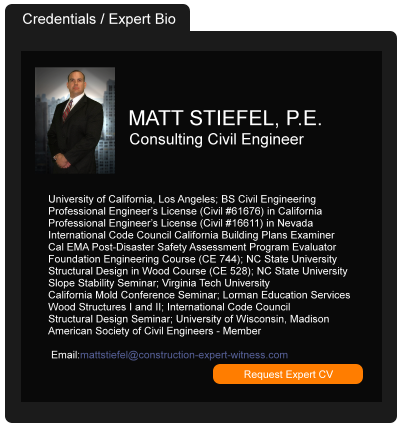Insured's Motion for Reconsideration on Denial of Coverage Unsuccessful
September 28, 2017 —
Tred R. Eyerly - Insurance Law HawaiiThe insured's motion to reconsider an order granting the insurer summary judgment challenges the insured's theory it was an additional insured was rejected by the federal district court. Hanover Ins. Co. v. Superior Labor Servs., 2017 U.S. Dist. LEXIS 133127 (E.D. La. Aug. 21, 2017).
The court previously granted Lexington Insurance Company's motion for summary judgment, finding Allied Shipyard, Inc. was not an additional insured and was not entitled to a defense in the underlying actions. On reconsideration, Allied argued the court ruled it was not a "certificate holder" under the Lexington policy, but Allied was not given the opportunity to conduct discovery with respect to whether it was a "certificate holder." Summary judgment was granted before Allied answered Lexington's amended complaint in intervention. Allied submitted its answer could have raised a genuine issue of material fact because it was entitled to coverage under the policy if it was a certificate holder.
Read the court decisionRead the full story...Reprinted courtesy of
Tred R. Eyerly, Insurance Law HawaiiMr. Eyerly may be contacted at
te@hawaiilawyer.com
Eighth Circuit Rejects Retroactive Application of Construction Defect Legislation
September 17, 2014 —
Tred R. Eyerly – Insurance Law HawaiiThe Eighth Circuit refused to retroactively apply an Arkansas statute establishing coverage for faulty workmanship. J-McDaniel Const. Co., Inc. v. Mid-Continent Cas. Co., 2014 U.S. App. LEXIS 14911 (8th Cir. Aug. 4, 2014).
The homeowners sued J-McDaniel for faulty workmanship in constructing their home. The defective construction work was performed by subcontractors. Mid-Continent refused to defend or indemnify J-McDaniel.
The insured sued Mid-Continent. The district court dismissed the claim pursuant to Essex Ins. Co. v. Holder, 261 S.W. 3d 456, 460 (Ark. 2008). In Essex, the Arkansas Supreme Court held that defective workmanship resulting in damages only to the work product itself was not an occurrence. Although The Arkansas legislature overruled Essex by statute, the district court found that the Arkansas case law barred retroactive application of the statute.
Read the court decisionRead the full story...Reprinted courtesy of
Tred R. Eyerly, Insurance Law HawaiiMr. Eyerly may be contacted at
te@hawaiilawyer.com
Montrose III: Appeals Court Rejects “Elective Vertical Stacking,” but Declines to Find “Universal Horizontal Exhaustion” Absent Proof of Policy Wordings
September 14, 2017 —
Christopher Kendrick & Valerie A. Moore – Haight Brown & Bonesteel LLPIn Montrose Chemical Corp. v. Superior Court (No. B272387; filed 8/31/17) (Montrose III), a California appeals court found that excess insurance is not triggered for continuous and progressive losses until there has been horizontal exhaustion of underlying insurance, but there is no “universal horizontal exhaustion” because the order or sequence in which excess policies may be accessed depends on the specific policy wording at issue.
The coverage lawsuit was initiated by Montrose in 1990, when it was named in environmental actions for continuous and progressive property damage emanating from its Torrance chemical plant since the 1960s. Montrose had varying levels of insurance coverage throughout, but the total limits and attachment points of differing levels of excess coverage in any given year had changed from year-to-year. The coverage action was stayed in 2006 due to concern of prejudice to the underlying defense, but the stay was lifted in 2014 with Montrose entering a consent decree in the CERCLA action.
Reprinted courtesy of
Christopher Kendrick, Haight Brown & Bonesteel LLP and
Valerie A. Moore, Haight Brown & Bonesteel LLP
Mr. Kendrick may be contacted at ckendrick@hbblaw.com
Ms. Moore may be contacted at vmoore@hbblaw.com
Read the court decisionRead the full story...Reprinted courtesy of
ACEC Research Institute Releases New Engineering Industry Forecast
December 13, 2021 —
American Council of Engineering CompaniesWashington, DC, Dec. 09, 2021 (GLOBE NEWSWIRE) -- Today, the ACEC Research Institute released two new reports on the Engineering and Design Services industry: the 2021 Economic Assessment of the Engineering and Design Services Industry and a new Engineering Business Sentiment report for Q4 2021.
The data shows the industry has rebounded from project postponements due to COVID, though firms identify a tight labor market and lack of qualified workers as continued barriers to growth across public and private markets.
This is the second annual release of the Engineering and Design Services industry assessment, which tracks the industry's economic contributions, analyzes key economic drivers, and forecasts industry growth.
Snapshot of the Engineering and Design Services Industry:
1.5 million direct full- and part-time jobs
$97,300 average yearly wages
$338 billion in industry sales
$198 billion direct economic contribution
$105 billion collected in total federal, state & local tax
Both reports, the 2021 Economic Assessment of the Engineering and Design Services Industry and the Engineering Business Sentiment report for Q4 2021, are available for download by clicking
here.
###
The ACEC Research Institute is the research arm of the American Council of Engineering Companies – the business association of the nation's engineering industry. The ACEC Research Institute's mission is to deliver knowledge and business strategies that guide and elevate the engineering industry and to be the leading source of knowledge and thought leadership for creating a more sustainable, safe, secure and technically advanced built environment. For more information, go to www.acecresearchinstitute.org.
Read the court decisionRead the full story...Reprinted courtesy of
Fundamental Fairness Trumps Contract Language
September 24, 2014 —
Craig Martin – Construction Contractor AdvisorThe Texas Supreme Court recently ruled that a “no-damages-for-delay” clause would not be enforced where the delay was caused by the owner. The court’s ruling flies squarely in the face of the contract language that attempted to insulate the owner from any delay claims, even those it caused.
In the case of Zachary Construction v. Port of Houston underlying contract, proposed by the Port of Houston, was heavy handed, to say the least. The contract provided:
“[Contractor] shall receive no financial compensation for delay or hindrance to the Work. In no event shall the Port Authority be liable to [Contractor] … for any damages arising out of or associated with any delay or hindrance to the Work, regardless of the source of the delay or hindrance, including events of Force Majeure, AND EVEN IF SUCH DELAY OR HINDRANCE RESULTS FROM, ARISES OUT OF OR IS DUE IN WHOLE OR IN PART, TO THE NEGLIGENCE, BREACH OF CONTRACT OR OTHER FAULT OF THE PORT AUTHORITY. [Contractor’s] sole remedy in any such case shall be an extension of time.”
Wow, that’s some one-sided language. If the contract was enforced, the contractor could not get any damages for delay, even those damages caused by the active interference of the Port of Houston.
Read the court decisionRead the full story...Reprinted courtesy of
Craig Martin, Lamson, Dugan and Murray, LLPMr. Martin may be contacted at
cmartin@ldmlaw.com
Real Estate & Construction News Roundup (7/31/24) – International Homebuying Shrinks Commercial Real Estate Focus on Sustainability, and U.S. Banks Boost Provisions for Credit Losses
September 09, 2024 —
Pillsbury's Construction & Real Estate Law Team - Gravel2Gavel Construction & Real Estate Law BlogIn our latest roundup, mortgage rates drop to lowest levels since March, hotel construction activity highest since February 2023, Biden administration calls for legislation regarding property owners, and more!
- International buyers bought 54,300 existing homes from April 2023 to March 2024 – a 36% drop from the year before. (Diana Olick, CNBC)
- The Biden administration called on Congress to pass legislation penalizing property owners for rent increases above a certain level as part of its plan to lower housing costs through a series of administrative actions. (Mary Salmonsen, Multifamily Dive)
- U.S. banks have boosted their provisions for credit losses as deteriorating commercial real estate (CRE) loans and high interest rates fuel fears of defaults. (Manya Saini, Niket Nishant and Matt Tracy, Reuters)
Read the court decisionRead the full story...Reprinted courtesy of
Pillsbury's Construction & Real Estate Law Team
Colorado Requires Builders to Accommodate High-Efficiency Devices in New Homes
December 14, 2020 —
David M. McLain – Colorado Construction LitigationStarting in 2009, the Colorado Legislature began adding requirements that builders offer certain options to accommodate high-efficiency devices. These requirements started with solar prewire options in 2009, then water-smart home options in 2010. In 2020, the Legislature added requirements for electric vehicle charging and heating systems. These sections apply to unoccupied homes serving as sales inventory or a model home or manufactured homes, as defined by Colorado law. While the Legislature has only required builders to include options to accommodate these devices, it may be just a matter of time until builders must install the prescribed devices themselves.
In 2009, the Legislature passed C.R.S. 38-35.7-106, which was amended this year by HB 20-1155. As it now reads, Colorado law requires every builder of single-family detached residences to offer to have the home’s electrical or plumbing system, or both, include:
- A residential photovoltaic solar generation system or a residential thermal system, or both;
- Upgrades of wiring or plumbing, or both, planned by the builder to accommodate future installation of such systems; and
- A chase or conduit, or both, constructed to allow ease of future installation of the necessary wiring or plumbing for such systems.
Read the court decisionRead the full story...Reprinted courtesy of
David McLain, Higgins, Hopkins, McLain & RoswellMr. McLain may be contacted at
mclain@hhmrlaw.com
2023’s Bank Failures: What Contractors, Material Suppliers and Equipment Lessors Can Do to Protect Themselves
May 15, 2023 —
Garret Murai - California Construction Law BlogIt has been a tumultuous year for the banking industry. Since the beginning of this year the industry has seen the collapse of Silicon Valley Bank and Signature Bank, the shotgun marriage between failing Credit Suisse and USB, and, most recently, the collapse of First Republic Bank this past week and its purchase by JP Morgan Chase. Indeed, according to the New York Times, these three bank failures cum bailouts alone were bigger than the 25 banks that collapsed during the financial crises of 2008 and some are concerned that it is just the beginning.
This, of course, has impacted the stock market, with Forbes reporting that the banking industry lost more than $300 billion in market value as of the end of March. However, it also raises concerns regarding liquidity on construction projects.
While the failing banks have either been bought out by other banks or shored up by the federal government, which, in the case of Silicon Valley Bank and Signature Bank, involved the Federal Deposit Insurance Corporation (FDIC), the Treasury Department and the Federal Reserve stepping into to protect depositors by
guaranteeing deposits in excess of the current FDIC limit of $250,000, there continues to be concerns over access to cash. This can impact construction projects in several ways.
Read the court decisionRead the full story...Reprinted courtesy of
Garret Murai, Nomos LLPMr. Murai may be contacted at
gmurai@nomosllp.com


































































